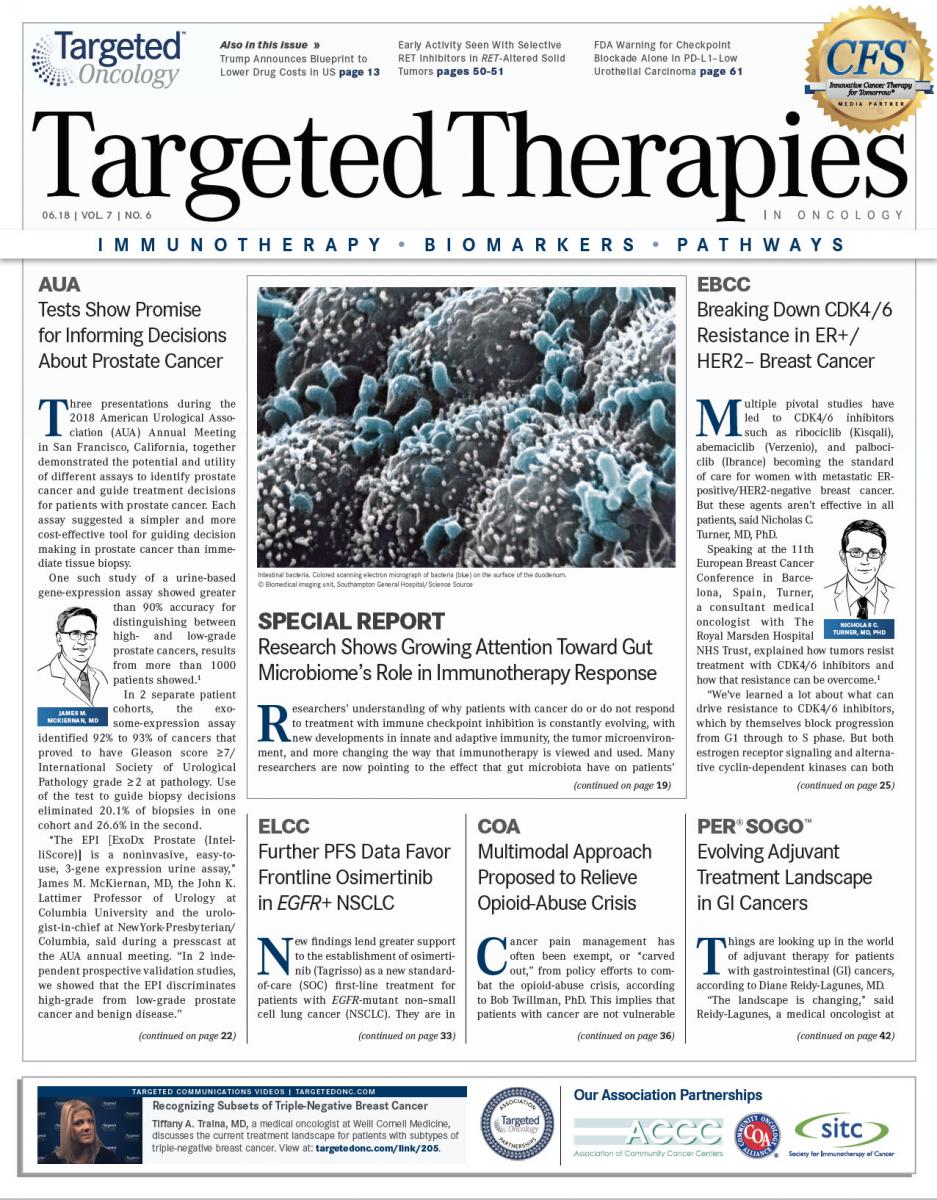Further Consolidations Reported in Community-Based Cancer Care
Community-based cancer care continues to regress, with an 11.3% increase in the number of community cancer clinic closings since 2016, according to the 2018 Community Oncology Alliance Practice Impact Report, which was released during the 2018 Community Oncology Conference.
Jeffrey Vacirca, MD
Community-based cancer care continues to regress, with an 11.3% increase in the number of community cancer clinic closings since 2016, according to the 2018 Community Oncology Alliance (COA) Practice Impact Report, which was released during the 2018 Community Oncology Conference. The report also noted an 8% increase in the number of consolidations in the hospital setting, which seemingly correlates with the 7.9% decline in the number of practices struggling financially.
“The shifting and shrinking community cancer care reduces access to cancer care; inflates spending at the more expensive hospital setting; and is a disservice to patients, their caregivers, and support networks,” said Jeffrey Vacirca, MD, CEO of New York Cancer Specialists and president of COA, in a statement.
At the state level, the largest number of closures occurred in Florida (47), Texas (43), and Michigan (36)the same states noted in the 2016 Practice Impact Report. These states were closely followed by California (32) and Tennessee (20).
At the national level, the data show that a total 423 clinics across the United States have closed, 359 clinics admitted to struggling financially, 658 practices have been acquired by hospitals, and 168 practices have merged or have been acquired by a corporate entity. An additional 45 practices send their Medicare patients elsewhere to receive chemotherapy treatments (TABLE).
During an interview withTargeted Therapies in Oncology, Ted Okon, executive director of COA, noted that rural practices are particularly susceptible to hospital acquirement. “Rural areas, where they operate to break even or at a loss, will close, and hospitals have a tendency to build lavish centers to consolidate,” he said.
The report builds on regular studies initiated by COA over a 10-year period to track the status and sustainability of the independent oncology clinic population in the United States. Within the past decade, a steady decline has involved 1653 community oncology clinics and/or practices that have either closed, been acquired by hospitals, undergone corporate mergers, or reported financial struggles.
COA affirmed that the reported trends can be attributed to “misguided public policies, [which] continue [to] push and pull on community oncology practices.”
On the one hand, the ongoing 2% sequester payment cut to Medicare, enacted by the Centers for Medicare & Medicaid Services in 2013, has created a push from community care, leaving practices unable to survive under the economic pressure and caving to hospital settings. Since the enactment of the sequester, it was noted by COA that 135 cancer treatment clinics have closed and 189 practices were acquired by hospitals. On the other hand, the financial pull of the 340B Drug Discount Program has forced independent community cancer clinics out of business because of the high volume of covered drugs.
The Practice Impact Report notes several studies, done by Avalere Health, Berkeley Research Group Milliman, and The Moran Group, have demonstrated that by raising prices in the hospital setting, the discount program has paradoxically harmed the patients it was intended to help.
“The 340B program is far beyond the original intent of the program,” Okon noted during the interview. “It has mutated into what would be unrecognizable to Congress’ original thought when they wrote section 340B in the Public Health Services Act and what they intended.”

Despite all the criticism surrounding it, Okon described the program as a “critical safety net” in need of repair. He suggested shining a heavier light on hospitals for transparency and accountability to show how exactly the funding gained from the program benefits the community both directly and indirectly.
“Patients deserve accessible and affordable cancer care in the communities where they live and work,” Vacirca said in a statement. “But as long as policy makers continue to allow misguided policy making that has the unintended consequences we see in this report, community oncology practices may not be here tomorrow to provide that kind of care.”
Although Vacirca expresses doubt for the current track of community oncology, Okon offered hope for the future: “There are steps being taken. Community oncologists witnessed at our [COA conference] that there are practices that are merging and working together like never before. I don’t think community oncology goes away; in the process of this [decline], it will become stronger.”
The 2018 Practice Impact Report, compiled from various public and private data sources, is the seventh report to be released by COA.
Reference:
2018 Community Oncology Alliance Practice Impact Report. Community Oncology Alliance website. communityoncology.org/downloads/pir/COA-Practice-Impact-Report-2018-FINAL.pdf. Accessed April 12, 2018.

Biomarker Testing Paves the Way for Better Targeted Therapies in NSCLC
April 16th 2024At a live virtual event, Edward S. Kim, MD, MBA, discussed the evolving landscape of biomarker testing before making treatment decisions for patients with early-stage non–small cell lung cancer (NSCLC).
Read More
Creating Solutions for a 'Continual State of Transition' in Cancer Care
April 15th 2024In a Peers & Perspectives in Oncology feature article, we focus on the importance of the transition-of-care process for patients with cancer as they move from the inpatient to outpatient setting, as well as between lines of therapy with comments from Marc J. Braunstein, MD, PhD, and Michael Shusterman, MD.
Read More